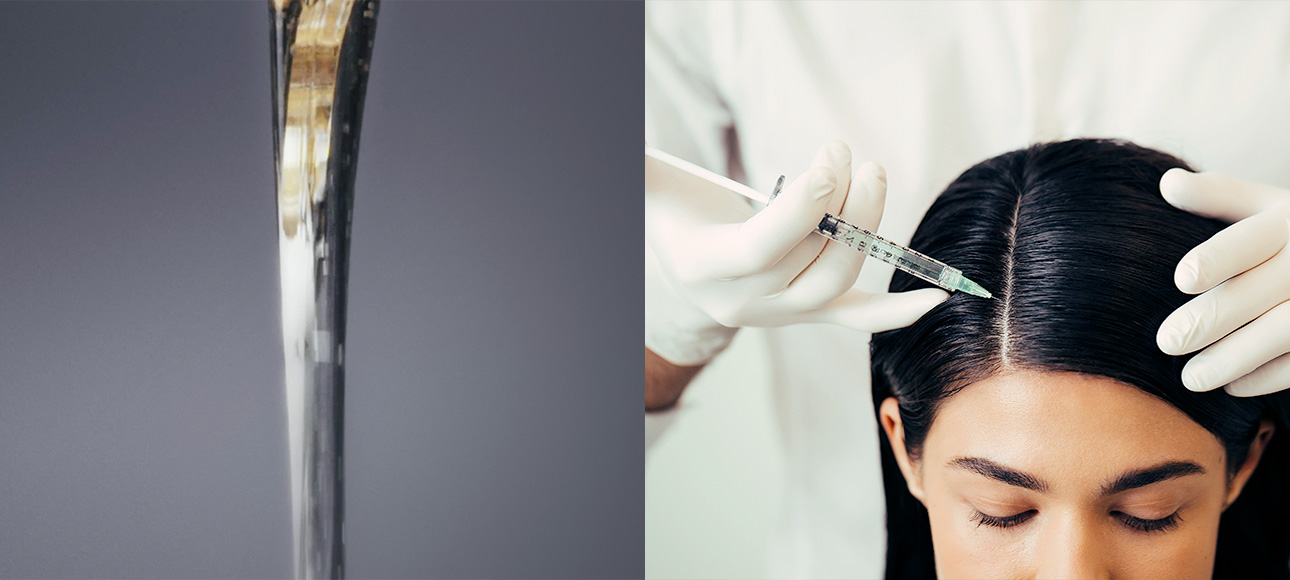
The lines between medicine and aesthetics are well and truly blurred and nothing exemplifies this better than the use of growth factors.
First discovered in 1953, the doctors responsible were awarded a Nobel Prize – giving growth factor treatments some major scientific credentials. Once reserved for injury repair, and to speed up post-surgery recovery times, injecting growth factors is now commonly used to beautify the skin and coax thinning hair back to its former glory. Cue platelet rich plasma injections, aka PRP, the gold standard growth factor-based treatment performed by aesthetic doctors, surgeons, and trichologists alike. So, while scalp massage, treatment oils, supplements and reducing heat styling can all be beneficial for preventing hair loss and bolstering hair health, PRP takes things to a whole new level.
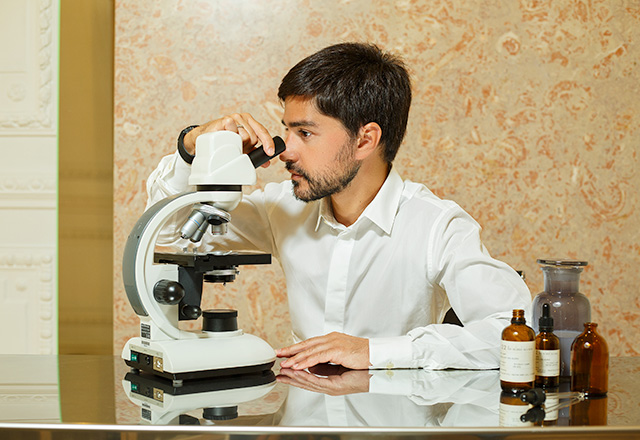
“
It’s definitely one of the best natural follicle enhancing treatments available, getting to work directly in the matrix cells of our hair, it boosts cellular regeneration, which helps to turbo-charge growth, as well as thicken and strengthen your hair from the inside out.
”
Ricardo Vila Nova
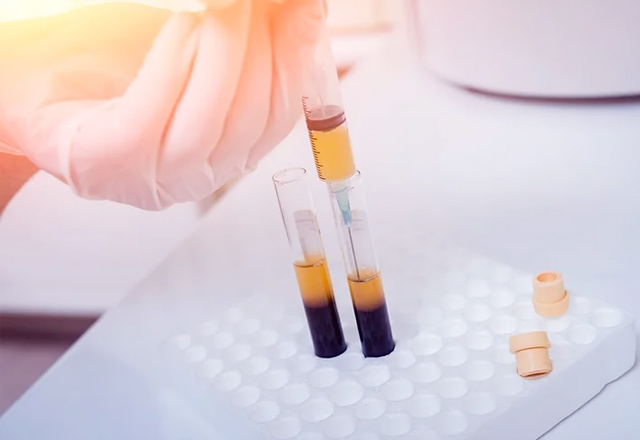
What does a PRP treatment entail?
When performed on the face, PRP is often referred to as a ‘vampire facial’, but while it does use your blood, it’s not as gory as social media would have you believe. While Kim Kardashian made this facial treatment famous, the images she posted where somewhat misleading. Platelet rich plasma is extracted from the blood, and is more of a yellow hue, so there’s absolutely no blood smeared all over the face or scalp when undergoing this treatment.
Instead, “just like when you go for a blood test, a small amount of blood is taken from a vein in your arm. It’s then placed into a centrifuge – a machine that spins the blood incredibly quickly – causing the plasma to separate from the blood,” explains Vila Nova.
This process only takes around 15 minutes and then the plasma is ready to be injected into the scalp or massaged into the face after microneedling.
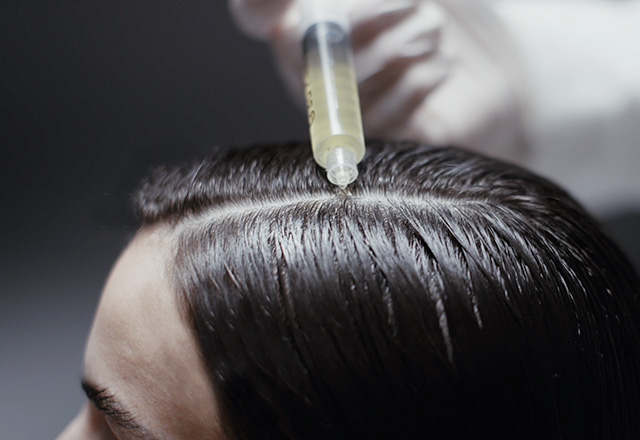
How exactly does PRP work?
When injected into the scalp, the plasma gets to work in the bulge area of our hair follicles – this area is home to most of the hair follicles’ stem cells. “There are two key types of growth factors found in the platelet rich plasma – vascular endothelial growth factor (VEGF), increases blood flow to our hair follicles, which boosts nutrient and oxygen delivery. While platelet-derived growth factor (PDGF), is essential for cell regeneration and the development of new blood vessels that transport blood to the hair follicles to keep them in good condition. Together these growth factors ensure new hair growth, making PRP an effective treatment for people who are experiencing various forms of hair loss or thinning,” shares Vila Nova.
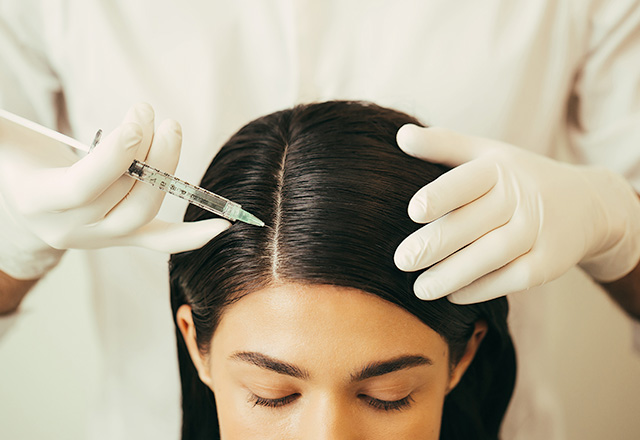
What types of hair loss does PRP work best for?
What’s great about PRP is that you don’t need to be experiencing hair loss or thinning to tap into the benefits of this treatment. “I’m a big advocate for looking after the hair and scalp in the same way that you would look after your skin. So, just like we use active packed preventative youth-boosting skincare, we should also be tapping into hair treatments like PRP that help to maintain youthful strands,” says Vila Nova.
However, for those experiencing hair thinning, and loss, studies have shown that courses of PRP can be beneficial in growing back hair lost due to traction alopecia, androgenic alopecia, mild alopecia areata, lichen planopilaris, central centrifugal cicatricial alopecia, and frontal fibrosing alopecia. Though it’s worth noting that if your alopecia has developed into scarring alopecia, which is where the follicles are not simply dormant but have in fact ‘died’, then “it’s not possible to kick-start hair growth in these areas,” shares Vila Nova. He recommends a course of three to six treatments at one month intervals, with twice yearly boosters thereafter for best results.
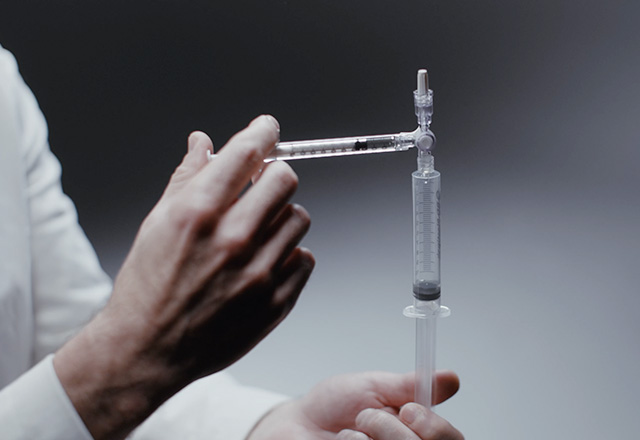
Does PRP have any side-effects or downtime?
Due to the fact that the plasma is your own, there are no side effects from reinjecting your it back into the scalp. “However, if you’re not treated by a qualified practitioner who has plenty of experience under their belt, you can run the risk of experiencing a poorly administered treatment that could lead to nerve and tissue damage, infection, and lasting pain at the site of injection,” warns Vila Nova. But with well over a decade of experience you’re in safe hand with Vila Nova and his team.
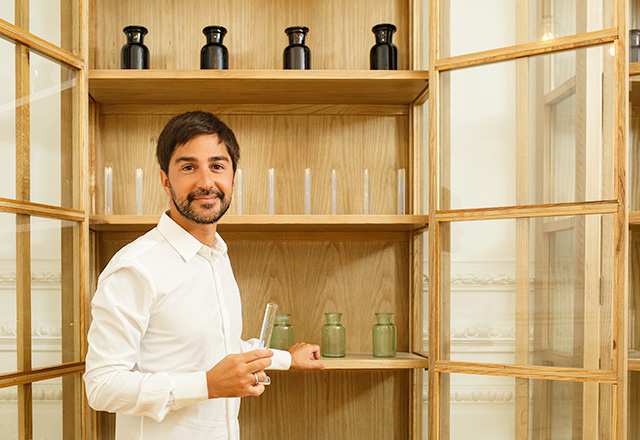
To transform your tresses, click here to book a Hair DNA scan. The results of which will help Vila Nova and his team decipher how best to integrate PRP treatments into your treatment plan.


